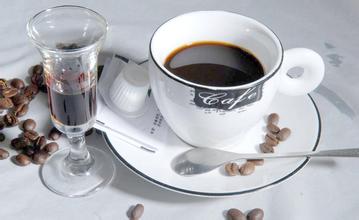Introduction to the taste of Ecuadorian boutique coffee beans with soft taste
For coffee, the most important thing is to understand the soil and altitude in which it grows will have a significant impact on the quality of coffee products. Alpine coffee from Ecuador is produced at an altitude of about 1000-2000 meters. Coffee from different soils has different tastes. Its taste is very interesting, a little sour and bitter, coupled with aromas and sweetness of fruit, grass and chocolate, Ecuadorian alpine coffee is a very good choice for making ESPRESSO and drip coffee, because you can taste its strong taste.
Ghana Pagos coffee is produced at an average altitude of 300 meters above sea level. It has different tastes, it is not so sour and bitter, it tastes very good, it is mild, it tastes slightly sweet and floral, and it is very easy to taste. It is a very good choice for guests who are just starting to drink coffee. For drip-filtered coffee that wants to make and taste pure aroma and taste, I recommend you try coffee from Canapagos Island.
Ecuador is one of the few countries in the world that can provide Arabica and robusta coffee. Robusta coffee is mainly produced in the Ecuadorian jungle and seaside areas and is mainly used to produce instant coffee. for buyers who want to buy instant coffee in large quantities Ecuador can be another choice for you. David Mino, the new champion barista from Ecuador, carefully concocts the original Ecuadorian coffee on the spot, and leads the friends on the scene to enjoy a trip to the tip of the Ecuadorian tongue.
From Galpagos coffee with surprising soft taste, to sour and bitter alpine coffee from LOJA, Ecuador, to softer Ghanaian pugs coffee mixed with strong LOJA coffee, we also introduced Vilcabamba alpine coffee produced at 1780 meters above sea level, and finally showed you the top Loja Blend coffee with chocolate, fruit flavor, a little bitterness and sour.

Important Notice :
前街咖啡 FrontStreet Coffee has moved to new addredd:
FrontStreet Coffee Address: 315,Donghua East Road,GuangZhou
Tel:020 38364473
- Prev

Introduction to the manor producing area with the flavor of Jamaican coffee
The unique flavor of Blue Mountain Coffee is related to its unique geographical location and climatic conditions. Blue Mountain is located in the coffee belt between 25 degrees north latitude and 25 degrees south latitude, with fertile new volcanic soil, fresh air, no pollution, rainy all the year round and great temperature difference between day and night. Most importantly, every afternoon, clouds cover the top of the mountain, which not only shades the coffee trees naturally, but also brings abundant
- Next

The very rich flavor of Indonesian Manning coffee beans introduces the Jintamani producing area.
Manning is not the name of the producing area, the place name, the port name, nor the name of the coffee breed. How did it get its name? In fact, it is a phonetic error of the mandheling people in Mandaining, Indonesia. During the Japanese occupation of Indonesia during World War II, a Japanese soldier drank mellow coffee in a cafe, so he asked the shopkeeper the name of the coffee, and the boss mistook him for asking where you were.
Related
- Detailed explanation of Jadeite planting Land in Panamanian Jadeite Manor introduction to the grading system of Jadeite competitive bidding, Red bid, Green bid and Rose Summer
- Story of Coffee planting in Brenka region of Costa Rica Stonehenge Manor anaerobic heavy honey treatment of flavor mouth
- What's on the barrel of Blue Mountain Coffee beans?
- Can American coffee also pull flowers? How to use hot American style to pull out a good-looking pattern?
- Can you make a cold extract with coffee beans? What is the right proportion for cold-extracted coffee formula?
- Indonesian PWN Gold Mandrine Coffee Origin Features Flavor How to Chong? Mandolin coffee is American.
- A brief introduction to the flavor characteristics of Brazilian yellow bourbon coffee beans
- What is the effect of different water quality on the flavor of cold-extracted coffee? What kind of water is best for brewing coffee?
- Why do you think of Rose Summer whenever you mention Panamanian coffee?
- Introduction to the characteristics of authentic blue mountain coffee bean producing areas? What is the CIB Coffee Authority in Jamaica?

